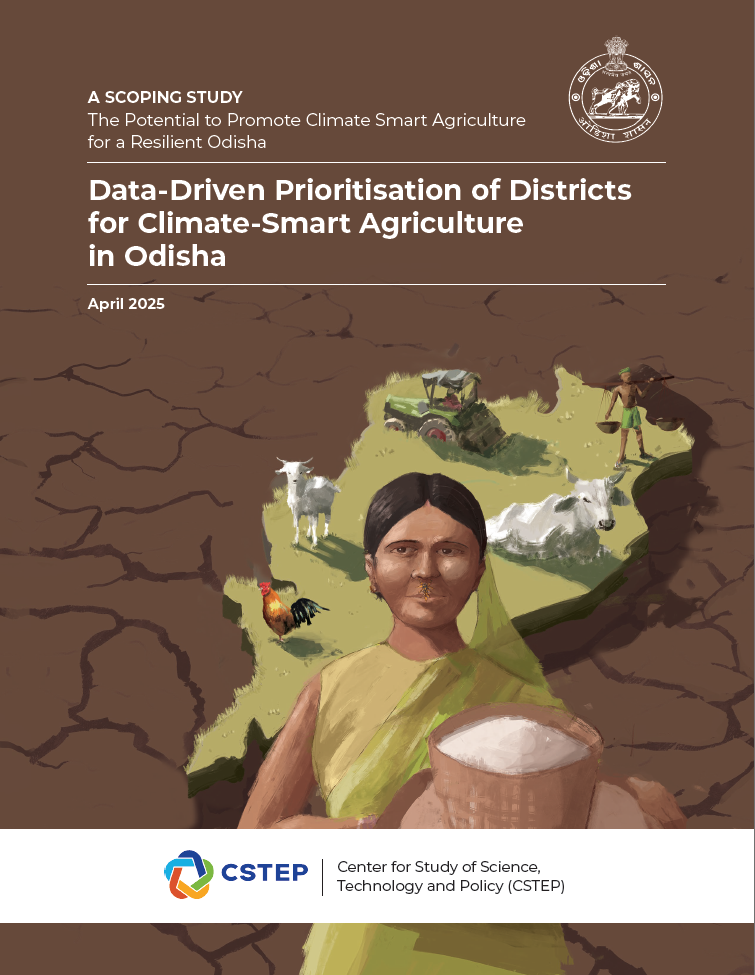Odisha’s agricultural and allied sectors, which are vital to the state’s economy, face growing threats from climate change and its associated extremes. This scoping report series aims to identify priority districts for targeted interventions to enhance resilience in these sectors. The analysis integrates three key components—Resource Use Profiling (RUP), Greenhouse Gas (GHG) Emissions Inventory, and Climate Risk Assessment (CRA)—to examine the nature, extent, and intensity of climate impacts on agriculture and allied activities.
The findings provide a triangulated approach to identify districts with high resource use, high GHG emissions, and significant climate risks. These insights will inform the development of District-Level Climate Action Plans and promote the adoption of Climate Smart Agriculture (CSA) practices. The report series is divided into three parts. Part 1 explores RUP and GHG emissions, while Part 2 focuses on climate risks and these are synthesized in this report to identify priority districts for CSA interventions to maximize climate resilience and sustainability.
The objective of this report is to detail the methodology used to undertake baseline assessment of the agriculture and allied sectors and to present the results of the assessment. This information will guide decision-makers and planners in identifying districts with high resource use, GHG emissions, and those with significant risks to droughts, floods and heatwaves, enabling them to roll out a comprehensive package of CSA interventions that address resource use inefficiencies, mitigate emissions from crop and livestock production, as well as build resilience and empower farmers to adapt to climate change impacts, wholistically.

